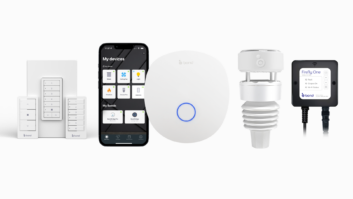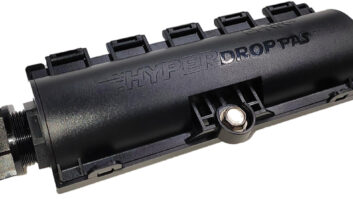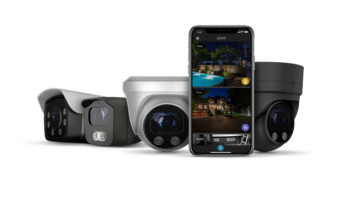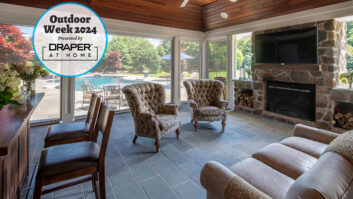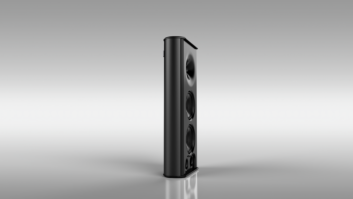The evolution of consumer viewing habits can be tracked along a timeline of verbs that have become less recording-media-centric and more abstract over the yearswe no longer tape video content, instead we TiVo, PVR, download or stream it. As none of these access methods are really meant to permanently record content, the shape of media is constantly in flux. Thus the networks that deliver images to us must also be in fluxadaptable to ever-changing standards and formats, and scalable so that the next round of super-high-res video files wont clog the network and stop the flow of entertainment.
Perhaps tantamount to these concerns is the issue of meeting consumer demand for seemingly infinite flexibility in the number of viewing locations in their homes. The days of basic mono audio distribution from the kitchen radio downstairs to the family room are far behind us. Today the once unattainable notion of residential video distribution is becoming more readily accessible as new digital technologies enable the transfer of multiple formats on a single type of cable, in most cases this being the nearly ubiquitous Cat-5, Cat-5e, Cat-6, and even Cat-7 cabling in new construction and retrofits.
Even in cases where a client has big plans for multiple displays and a wide array of sources, Cat-5e is definitely the industry standard, observed Scott Jordan, systems consultant with Electronics Design Group in Piscataway, New Jersey. Although Category 6 and 7 are available, theres no hardware out there that says you have to use those types of cable. There are a fair amount of homes where were installing Cat-6 and even some fiber, but for now Cat-5 can really handle almost everything.
Of course, this seemingly indispensable cables most significant limitation where video distribution is concerned is distance, but even here there are disputes as to how long is too long a run. Many would advise that 100 yards is the limit, but Jordan noted that sending high-definition or component signals over 1,000 feet isnt beyond reach. But you have to use the right devices, he said, We had an application where the driveway was a mile long and the client wanted to install a security camera at the gate [see May 2006 RS]. We were able to send the video signal in perfect condition all the way to the house on Cat-5 by using the right devices.
Cat-5e is just fine for all of these applications, conceded Ingo Schmoldt, vice president of sales for Fusion Research. The passing of information through those cables is fine now and should be fine for the forseeable future, even with high-def coming in and everything else. The key is going to be the server and the switch.
The latter element of this equation shouldnt be a problem, as prices are falling on network switches with plenty of gigabit ports for content servers and a fair share of 100baseT ports, should network players require them. This leaves the question of servers. The increasing pervasiveness of TiVo and other personal video recorders has helped spark a broad understanding of the video on demand nature inherent to servers, and as more households adapt to this type of television watching, theyre likely to want access to their shows in more than one location, just as theyve split cable and satellite signals to do the same in the past. Where the evolution has been occurring is in the replacement of dozens of little localized distribution boxes with a central video head-end. Today this streamlined approach is made possible even in smaller scale projects because of the low cost associated with digital video distribution over Cat-5e cable and a wide variety of server solutions.
Demand for video distribution is increasing in tandem with the availability of these servers and with the increasing number of flat-panel displays in homes. People buy flat screens because theyre flat and cool, emphasized Bill Schafer, director of product and channel development for Crestron. The last thing an integrator wants to do is tell a customer that they will have to put a cabinet full of equipment in the room now so they can watch TV on their flat screen. It would be better to just put some equipment down in the head end and serve it up.
Many of the technical limitations associated with video distribution seem to be things of the past, but some dealers are still unaware of the benefits… and the pitfalls. Once they jump into the offering, they often forget that new content demands might make todays plentiful bandwidth into tomorrows bottleneck. A lot of times people neglect to think through the implementation, they just start connecting things and it works fine until someone in the next room starts playing interactive Doom with his buddy on the other side of the world, and then you have network traffic, observed Robert Noble, vice president of product marketing for AMX. Thats why its essential to prioritize video content over e-mail and Internet browsing with a switch, he explained, because a delay in the latter wont make a difference to the user. We live with delays on the Internet all day long. But what you cant live with is jitter on the picture when youre watching a James Bond movie. That becomes annoying.
The other thing thats becoming crucial is the amount of storage thats available, Schmoldt observed. The ability to be able to scale and then future scale is going to be a key, especially as Blu-ray or HD-DVD becomes more prevalent. The problem right now is that higher-end hard drive space is very expensive, but the price is going down fast. Within two years youre going to need a lot more space than you need today with high-definition, but the price of storage should actually be less.
Something else to look out for in the HD transition is the move to MPEG4. DirecTV is starting to move toward their next encryption of video transmission, which means if you want all of the high-definition that DirecTV offers, its going to be broadcast in MPEG4, Jordan cautioned. That means you have to change your dish, all of your satellite receivers, and all of your distribution.
So it all comes down to the source and scalability. Is it digital, is it cable, is it digital satellite, DISH network; those all have differences in the way the wires run through the house and different types of wires for different types of signals, said Kirk Horlbeck, senior vice president for corporate marketing and international business development for Liberty Wire and Cable. Particularly when it comes to the Internet and whether youre going to be getting streaming video off the Internet. Theres a very blurry line now between devices, sources, and anything outside the norm of watching a DVD all over the house. A lot of people are increasingly working at home and they might want to view streaming web content in multiple places or in a small ancillary structure.
Subsequent to handling the many technical requirements at the back end, the next objective is to manage the front end of video distribution. People do want a single storage device, or more specifically, a single user interface, explained Steve Watson, CTO at Kaleidescape. They would like to be able to handle all of their content from a single place, and they dont want to deal with multiple devices in their living room in order to play back content.
As for the future, much is yet to be determined in the way of formats, and video distribution will continue to evolve accordingly. Someday the cabling part of the infrastructure may even be optional. Right now the quality of wireless isnt adequate for high-quality audio and video, Watson noted. But in the not too distant future it could be adequate for the transmission of music, video, and finally high-resolution video. That will solve an important problem, because some homes are difficult to retrofit. Weve had people buy systems for castles in Europe, and its not so easy to put Cat-5 cabling through stone. They have to find a way to transmit the signal, so wireless does hold a lot of promise.
For now, it is perhaps reassuring to know that the experience of distributed video is no longer a plaything of the rich, Horlbeck said. Still, people spend a lot of money on systems and they often neglect the wire. The signal is going to move from the input device, be it satellite, cable, or DVD player, to the viewing platform, and its going to move there over cable. So if you dont pay attention to the quality of the cable, it does have impact on the signal. What you dont want to do is try to skimp on the cable.
Kirsten Nelson is editor at large for Systems Contractor News.

